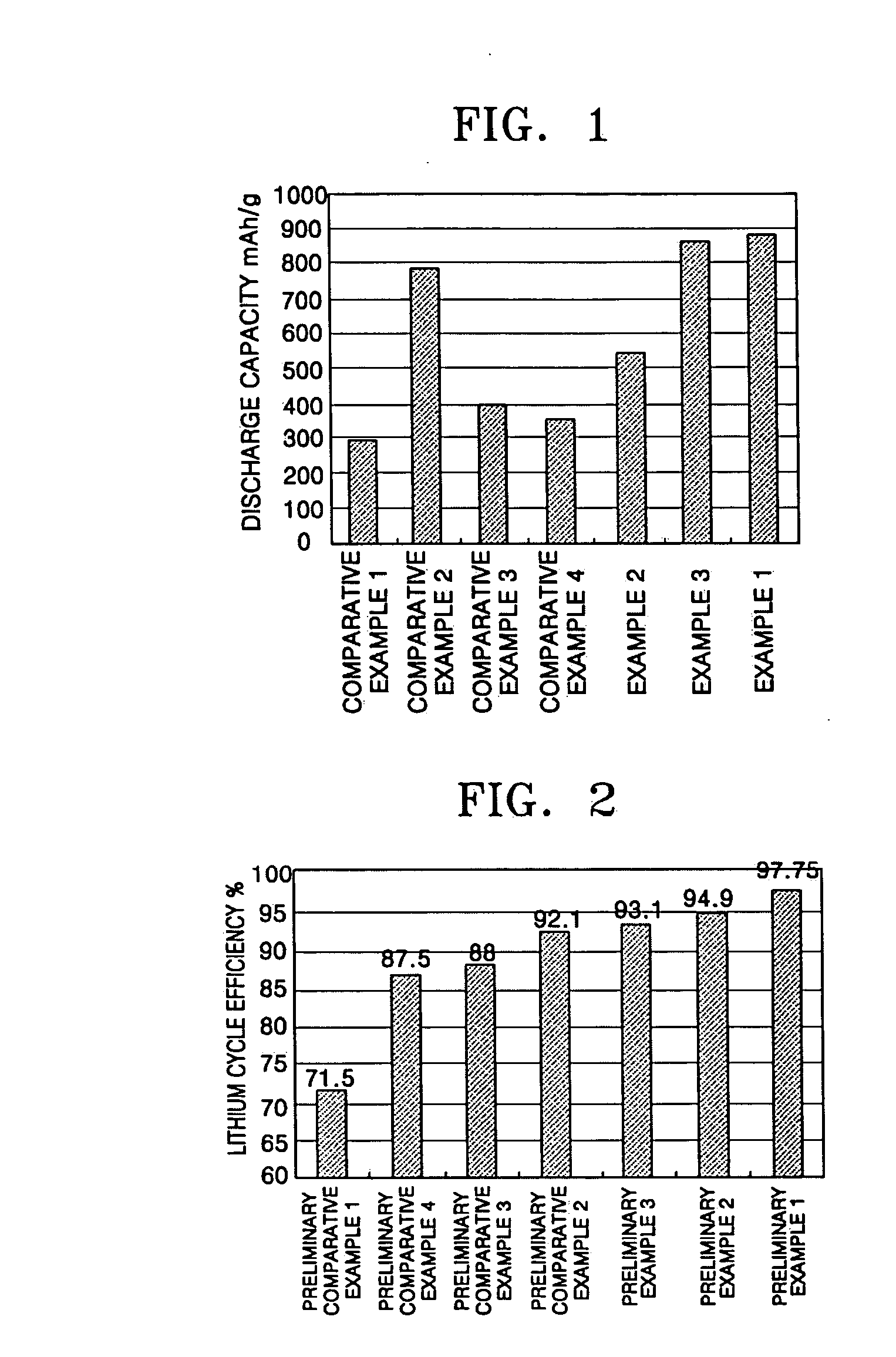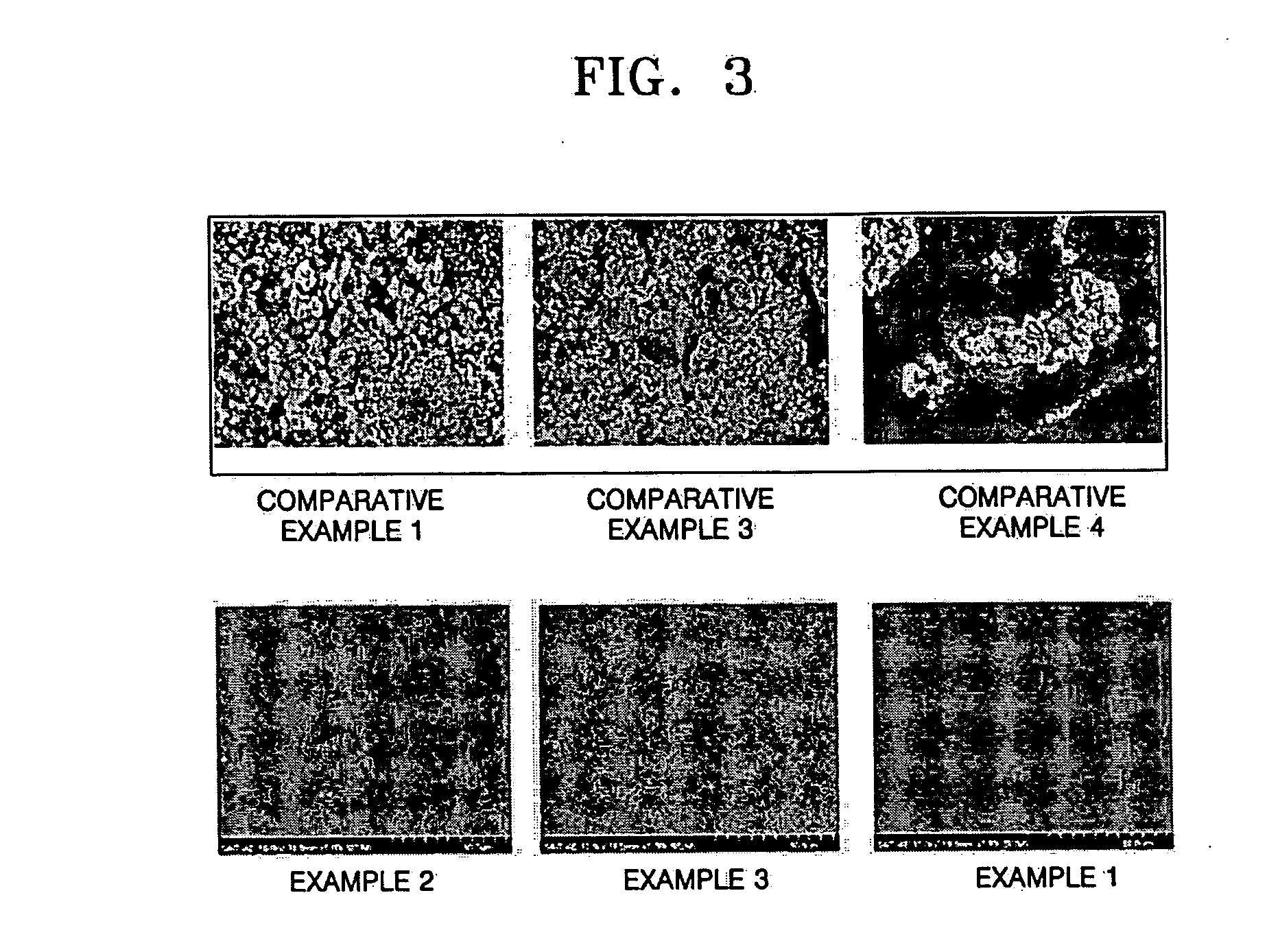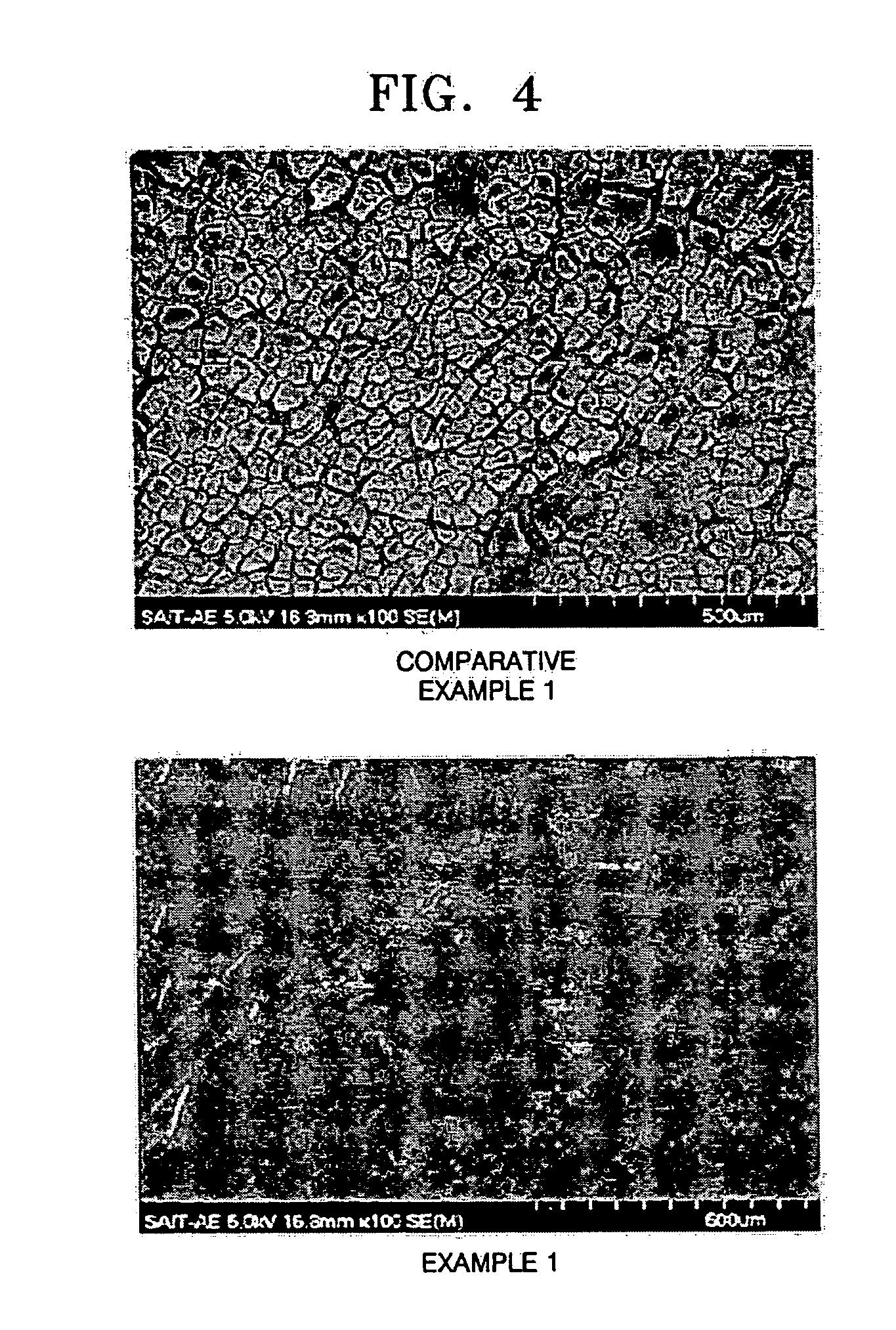Lithium-sulfur battery
a lithium-sulfur battery and lithium-sulfur technology, applied in the field of lithium-sulfur batteries, can solve the problems of low widespread use of lithium-sulfur batteries, reduced battery life, and inability to obtain high theoretical capacity of sulfur, and achieve excellent charging/discharging efficiency.
- Summary
- Abstract
- Description
- Claims
- Application Information
AI Technical Summary
Benefits of technology
Problems solved by technology
Method used
Image
Examples
example 1
1-1. Preparation of Cathode
[0036] A binder solution was prepared in a gel form by dissolving poly(methylmethacrylate) in acetonitrile. Then, Ketjen black was added to the solution as a conductor to ensure electrical conductivity. After dispersing the conductor the conductor in the solution, sulfur (S8) powder, which had been milled to an average particle diameter of about 20 μm, was added to the solution and stirred for 24 hours using a ball mill. The obtained powder (sulfur:conductor:binder weigh ratio of 70:20:10) was mixed with isopropyl alcohol to obtain a slurry. Then, after milling the slurry for 12 hours with a ball mill, a substrate composed of aluminium was coated with the slurry. Drying was performed with hot air at 60° C. for one hour to obtain a cathode.
1-2. Preparation of Anode
[0037] A foil of non-oxidized lithium metal having a thickness of 50 μm was used as an anode.
1-3. Assembling of Battery
[0038] The cathode obtained was placed in a vacuum oven (60° C.) for at ...
example 2
[0040] A lithium-sulfur battery was prepared in the same manner as in Example 1 except that a PVDF-HFP copolymer (available from SAEHAN) having a porosity of 30% and a pore size of 0.25 μm was used as a separator and that a mixture of DME, DGM and DOX with a volume ratio of 4:2:1 was used as an organic solvent.
example 3
[0041] A lithium-sulfur battery was prepared in the same manner as in Example 1 except that a PVDF separator having a porosity of 25% and a pore size of 0.5 μm, and containing, as an inorganic filler, fumed silica (available from Cabot, TS-530) having a surface treated with hydrophobic groups in an amount of 20 parts by weight, based on 100 parts by weight of the polymer of the separator, was used as a separator.
PUM
 Login to View More
Login to View More Abstract
Description
Claims
Application Information
 Login to View More
Login to View More - R&D
- Intellectual Property
- Life Sciences
- Materials
- Tech Scout
- Unparalleled Data Quality
- Higher Quality Content
- 60% Fewer Hallucinations
Browse by: Latest US Patents, China's latest patents, Technical Efficacy Thesaurus, Application Domain, Technology Topic, Popular Technical Reports.
© 2025 PatSnap. All rights reserved.Legal|Privacy policy|Modern Slavery Act Transparency Statement|Sitemap|About US| Contact US: help@patsnap.com



